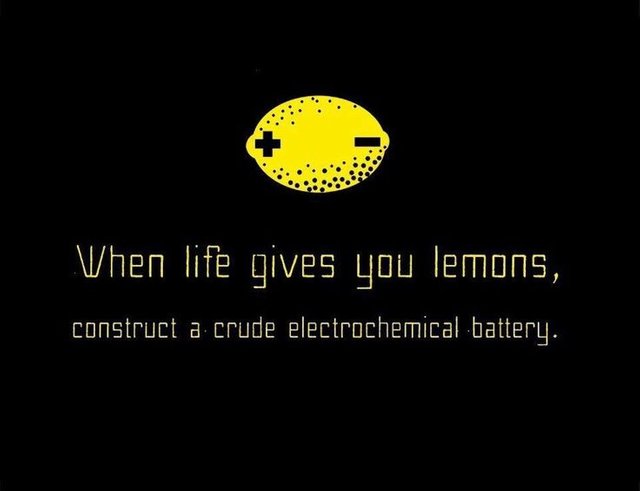Chemistry and Your Brain
Chemistry effects and can effect your brain in various ways, naturally as well as through consumption, etc. Recently there has been a Public interest in Brain health, but it often times does not get in to more detail than to eat certain foods, or to take supplements such as Fish Oil (Omega-3) or Vitamin D and other Vitamins. But there are many substances that can be taken in order to promote Brain health, as well as Chemical functions in your Brain, which you can specifically work to improve if you are aware of them.
Your Brain is full of Neurons (Brain Cells) which are connected by Dendrites (which are like Arms or Branches of the Neurons), and the Dendrites of various Neurons connect as Synapses (the point of connection between multiple Neuron's Dendrites). The entire process is fueled Electrochemically. Electricity is a function of Chemistry (Lithium Batteries, Copper Wire, Potato/Lemon Light Bulbs, etc), and your Brain Function comes from Electrochemical signaling. These chemicals are called Neuropeptides. Neuropeptides effect your emotions, etc. and all of these things together (Neurons, Dendrites, Synapses & Neuropeptides) are what form memories, ideas, and everything your Brain does.
Research Papers explaining Neuropeptides
http://www.ncbi.nlm.nih.gov/pubmed/21922398
http://www.ncbi.nlm.nih.gov/books/NBK116087/
http://www.ncbi.nlm.nih.gov/pmc/articles/PMC4736749/
Research Papers about Neuropeptides as Drug Targets
http://www.ncbi.nlm.nih.gov/pubmed/23161624
http://www.ncbi.nlm.nih.gov/pmc/articles/PMC3394504/
http://www.ncbi.nlm.nih.gov/pubmed/19743896
http://www.ncbi.nlm.nih.gov/pubmed/23205840
Neuropeptides have actually also been found outside of the brain, in what is called the Gut-Brain Axis. So there are literally, Biologically, Gut Feelings. Here are some Papers about the Gut-Brain Axis
http://www.ncbi.nlm.nih.gov/pmc/articles/PMC4359909/
http://www.ncbi.nlm.nih.gov/pmc/articles/PMC4367209/
http://www.ncbi.nlm.nih.gov/pmc/articles/PMC3791857/
http://www.ncbi.nlm.nih.gov/pmc/articles/PMC4370913/
http://www.ncbi.nlm.nih.gov/pubmed/24997044
Research Papers about Neuropeptide GPCRs
http://www.ncbi.nlm.nih.gov/pubmed/22908006
http://www.ncbi.nlm.nih.gov/pmc/articles/PMC4926255/
http://www.ncbi.nlm.nih.gov/pubmed/21728976
http://www.ncbi.nlm.nih.gov/pubmed/23932938
Research Papers about β-peptides & γ-peptides
http://www.ncbi.nlm.nih.gov/pubmed/17191902
http://www.ncbi.nlm.nih.gov/pubmed/16235225
http://www.ncbi.nlm.nih.gov/pubmed/11828476
http://www.ncbi.nlm.nih.gov/pubmed/19118806
http://www.ncbi.nlm.nih.gov/pubmed/8608006
http://www.ncbi.nlm.nih.gov/pubmed/20061647
Research Papers about Peptidomimetics (Molecules that mimic peptides)
http://www.ncbi.nlm.nih.gov/pubmed/9265722
http://www.ncbi.nlm.nih.gov/pubmed/20969906
http://www.ncbi.nlm.nih.gov/pubmed/25588572
Research Papers about Neuropeptides and SRIF
http://www.ncbi.nlm.nih.gov/pubmed/6149273
http://www.ncbi.nlm.nih.gov/pubmed/9031749
http://www.ncbi.nlm.nih.gov/pmc/articles/PMC391957/
Research Papers about Neuropeptides and Angiotensin
http://www.ncbi.nlm.nih.gov/pubmed/22649365
http://www.ncbi.nlm.nih.gov/pubmed/17443027
http://www.ncbi.nlm.nih.gov/pubmed/22234465
http://www.ncbi.nlm.nih.gov/pubmed/7989494
Research Papers about Neuropeptides and Endothelin
http://www.ncbi.nlm.nih.gov/pubmed/15121213
http://www.ncbi.nlm.nih.gov/pmc/articles/PMC2821480/
http://www.ncbi.nlm.nih.gov/pubmed/7692698
http://www.ncbi.nlm.nih.gov/pubmed/17592116
http://www.ncbi.nlm.nih.gov/pubmed/9932722
And important part of the Brain that went largely ignored until recently are the Glia, or Glial cells. Glia is the Greek word for Glue, and it was thought that these Cells simply acted as something like a Glue in the Brain holding everything together. Since it was discovered that these cells actually play a role in Brain function, they have been called "The Other Brain", and Glial Cells actually play a role in Neuropeptide function.
Here are some Research Papers explaining Glial Cells, GDNF and Neuropeptides
http://www.ncbi.nlm.nih.gov/pubmed/10998101
http://www.ncbi.nlm.nih.gov/pubmed/19934016
http://www.ncbi.nlm.nih.gov/pmc/articles/PMC2120511/
http://www.ncbi.nlm.nih.gov/pubmed/15667652
Research Papers about Oligodendrocytes and Astrocytes
http://www.ncbi.nlm.nih.gov/pubmed/18536641
http://www.ncbi.nlm.nih.gov/pmc/articles/PMC2799635/
http://www.ncbi.nlm.nih.gov/pmc/articles/PMC2799634/
http://www.ncbi.nlm.nih.gov/pubmed/11844734
http://www.ncbi.nlm.nih.gov/pubmed/23981039
http://www.ncbi.nlm.nih.gov/pmc/articles/PMC2982258/
http://www.ncbi.nlm.nih.gov/pubmed/11596126
http://www.ncbi.nlm.nih.gov/pubmed/15846805
There are many receptors in the Brain, the most well known of which are the 5-HT receptors, or Serotonin receptors. Activating receptors in your brain can allow it to function better in various ways. An example of how to do this is with 5-HTP (5-Hydroxytryptophan), which is very closely related to Serotonin (5-HT), and hits the 5-HT receptors.
Research Papers about 5-HT receptors
http://www.ncbi.nlm.nih.gov/books/NBK28234/
http://www.ncbi.nlm.nih.gov/pubmed/10462127
http://www.ncbi.nlm.nih.gov/pubmed/21808193
http://www.ncbi.nlm.nih.gov/pubmed/16465176
Research Papers about 5-HTP
http://www.ncbi.nlm.nih.gov/pubmed/9727088
http://www.ncbi.nlm.nih.gov/pubmed/3298325
http://www.ncbi.nlm.nih.gov/pubmed/1836762
And Serotonin receptors are not the only receptors in your brain. There are Cholerginic receptors which are effected by Nicotine, and GABA receptors which are effected by Benzos, etc. As well as various forms of Esterase, which eat extra Molecules before they get to your receptors and can be blocked to allow more to get to the receptors. Following are various Molecules that either hit a receptor, or block an Esterase.
Melatonin
http://www.ncbi.nlm.nih.gov/pubmed/8229640
http://www.ncbi.nlm.nih.gov/pubmed/23691095
Piracetam
http://www.ncbi.nlm.nih.gov/pubmed/16007238
http://www.ncbi.nlm.nih.gov/pubmed/1794001
Choline
http://www.ncbi.nlm.nih.gov/pmc/articles/PMC2782876/
Piracetam and Choline Combined
http://www.ncbi.nlm.nih.gov/pubmed/7301036
http://www.ncbi.nlm.nih.gov/pubmed/3110830
http://www.ncbi.nlm.nih.gov/pubmed/6472050
Phenylpiracetam
http://www.ncbi.nlm.nih.gov/pubmed/6403074
http://www.ncbi.nlm.nih.gov/pubmed/20166767
Galantamine
http://www.ncbi.nlm.nih.gov/pubmed/12137632
http://www.ncbi.nlm.nih.gov/pubmed/12962529
http://www.ncbi.nlm.nih.gov/pubmed/14641507
http://www.ncbi.nlm.nih.gov/pubmed/15353385
Alpha-GPC
http://www.ncbi.nlm.nih.gov/pubmed/1662399
http://www.ncbi.nlm.nih.gov/pmc/articles/PMC3313098/
Triacetyluridine
http://www.ncbi.nlm.nih.gov/pubmed/18540779
http://www.ncbi.nlm.nih.gov/pubmed/15970626
Phenylalanine
http://www.ncbi.nlm.nih.gov/pubmed/15688090
Phenibut
http://www.ncbi.nlm.nih.gov/pubmed/11830761
http://www.ncbi.nlm.nih.gov/pubmed/19899708
Noopept
http://www.ncbi.nlm.nih.gov/pubmed/25096780
http://www.ncbi.nlm.nih.gov/pubmed/19240853
PRL-8-53
http://www.ncbi.nlm.nih.gov/pubmed/418433
Synaptolepis Kirkii
http://www.ncbi.nlm.nih.gov/pubmed/11000015
Ubulawu
http://www.ncbi.nlm.nih.gov/pubmed/23061321
Posts like this
https://steemit.com/biohacking/@marsresident/neurogenesis-neuroprotectants-and-synaptogenesis
https://steemit.com/biohacking/@marsresident/brain-balance
https://steemit.com/biohacking/@marsresident/biological-immortality
https://steemit.com/biohacking/@marsresident/building-muscle-tissue
https://steemit.com/biohacking/@marsresident/the-church-of-neuroscience-and-biohacking
https://steemit.com/biohacking/@marsresident/building-brains

Very nice post! And thanks for all the links to scientific studies.